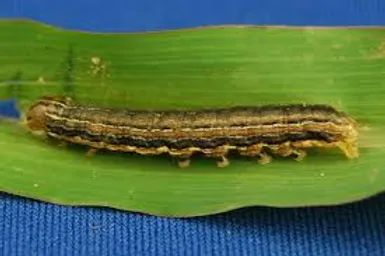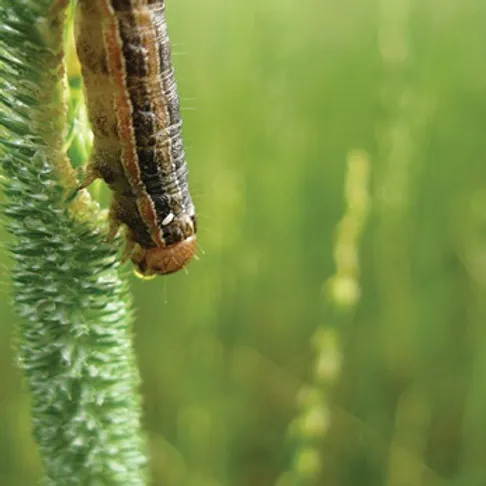There have been some reports of true armyworm (also known as common armyworm) damage in forage stands occurring in Ontario this summer. Armyworm tends to prefer feeding on forage grasses (including alfalfa-grass mixtures), sorghums and sudangrass, cereals (wheat, oats, barley, triticale & rye) and corn. The name “armyworm” reflects the large-scale invasive and destructive behavior of the larvae, where they “march” into a field and feed on crops. Severe damage can occur quickly.
Fully grown true armyworm are 4 cm (1-1/2 inches) long. They are dull-green to brown, with white-bordered stripes running laterally along the body. (Figure 1) Adult moths emerge in early spring and lay their eggs in grassy vegetation. When larvae hatch they begin feeding. There are 2 generations per year, but the first generation tends to do the most damage. The most severe damage typically occurs during June and July. Outbreak years tend to occur when there are cool springs that are detrimental to parasites that usually keep them under control.






